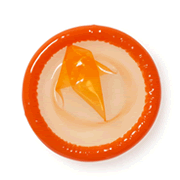How to Set Healthy Sexual Boundaries

Setting limits is all about communication.
Have you ever been in an uncomfortable situation with someone you’re having sex with? Try creating a boundary with the person (or people) making you uncomfortable.
Boundaries are guidelines a person uses to decide how others should treat them and what they should do if those boundaries are violated. While there are several different types of boundaries, sexual boundaries help keep you feeling safe in sexual settings.
Here are some examples of the different types of boundaries and how birth control can be its own boundary.
Physical boundaries
Your body, personal space, and physical wants and needs are all subject to physical boundaries. Physical boundaries protect your body and space, as well as your privacy, your right not to be touched, and your ability to meet physical needs. Boundaries tell others how close they can come to you, what kind of physical touch is acceptable, how much privacy you require, and how people should act in your own space.
Emotional boundaries
Emotional boundaries defend your right to have your own feelings and thoughts, to not have your feelings questioned or invalidated, and to not be responsible for the feelings of others. Emotional boundaries separate your emotions from those of the rest of the world.
Sexual boundaries
These boundaries differ from physical boundaries since, typically, these are established in sexual situations. Setting your limits (and allowing your partner(s) to set their own) and respecting everyone’s choices are also part of it. Remember, sex should always be consensual and voluntary.
Some examples of sexual boundaries include being open about what types of sex you are or are not willing to have, what types of sexual comments or language you allow, or whether you discuss your sex life with others. It might be that you do not have sex with someone until they have been tested for STIs, or unless they agree to use birth control (which you can get for free or low-cost at your nearest The Right Time health center) each time you have sex.
How to Set Boundaries
Setting limits is all about communication. The most important step toward defining your limitations is communicating your wants and objectives. Three steps to establishing boundaries are:
· Valuing yourself and feeling worthy of yourself. One way to do this is to prioritize your own needs. Doing this will make you stronger.
· Considering the things that bother you and listening to your inner voice. Understand when enough is enough. Don’t let others tell you what to feel comfortable with. You should set limits for yourself as you are the most knowledgeable about yourself.
· Being honest about your needs and wants. The most important step toward creating a safe space for yourself is understanding and communicating your limitations to those around you.
Related Content

Article
January is Cervical Cancer Awareness Month: What to Know About HPV and ScreeningA positive HPV test can feel scary, but healthcare providers at your nearest The Right Time clinic can help.

Article
Own Your Well-Being in 2026 with These 3 Sexual Health ResolutionsFirst: prioritize preventative sexual and reproductive health care.

Article
Birth Control & Your Period: What to ExpectBirth control often changes your period, and that’s normal and safe.

Article
Handling the “When Are You Having Kids?” Question Around the HolidaysRemember: your timeline is yours.



















